Team:UCL/Organisation
From 2014.igem.org
This is a proposal by the postgraduate members of the team for a initial organisational structure of the UCL iGEM 2014 team. This is necessary due to the number of participants, and a need to act fairly to all those involved. This document to be presented to the whole team prior to our first meeting back where it should be agreed upon (with any changes).
Five streams have been outlined as necessary parts to achieving a good submission to iGEM. The intention is that these streams are used as the basis of subteams. Where postgraduate members have experience in a particular area this has been indicated. The outlines can be updated once the subteam is meeting.
All members are expected to self-select into one or more of these subteams – or otherwise opt out of the UCL iGEM 2014 team.
One member (either undergrad or postgrad) from each subteam should be elected to sit on a steering committee. This committee is responsible for communicating updates between subteams, dealing with scientific and personal issues, and keeping this and other documents up to date.
Contents |
Teams
| Area | Lab 1: AzoDye | Lab 2: BioArt | Computational modelling | Web, branding, & communications | Public engagement | Human practice |
|---|---|---|---|---|---|---|
| Postgrads with experience in area | Adam, Tanel, Helina, Lewis | Adam, Tanel | Miriam, Rob | Adam, Rob | Rob | ??? |
Lab 1: AzoDye
Basic experimental goals: Introduce three types of azo-dye degrading enzymes, azoreductase, laccase, and lignin peroxidase into E. coli in order to create an azo dye decolourising and detoxifying organism with potential applications on an industrial scale. Azoreductase cleaves the azo (N=N) bond by reduction, while laccase and lignin peroxidase oxidize the aromatic products of this previous reduction by azoreductase. Although the initial cleavage of the azo bond by azoreductase significantly increases the toxicity of the products compared to that of the intact dyes, the posterior oxidation by laccase brings the toxicity levels back down to the point where it is below the initial toxicity of the intact dye (no data on toxicity by peroxidase, we assume it to be similar since it has a similar mechanism to that of laccase). Laccase and azoreductase are, thus, complementary.
Many variants of each enzyme exist. The specific enzymes selected for expression will depend on which strains are available, their previous use in literature and compatibility with iGEM cloning.
Lab 2: BioArt
Initially this team will evaluate the current Coliroid biobricks and their ability to generate bacterial photographs. Once the azo dye degrading biobricks have been developed by Team AzoDye this team will then be involved in the development of RNA aptamer BioBricks that block specific Azo dye reduction. These parts will then be incorporated into the coliroid biobrick network along with light-sensitive promoters to create azo-dye based colour photography. This may also involve using microfluidics to produce a pixel based system (Lewis + Dave)
Computational modelling
This team will be involved with supporting the work of the lab teams by creating and analysing computational and mathematical models of the biology.
A suitable programming language will be taught to those interested in learning how to code.
Web, branding, and communications
This team will primarily be involved in maintaining the UCL iGEM 2014 project website. This will involve liaising with the lab and public engagement teams to create blog posts and an FAQ section for upload onto the web site. Additionally, team members will be responsible for video editing and image manipulation to maintain the media gallery page. Team members will also be responsible for maintaining and setting up the projects social media channels. HTML editing training will be provided based on the templates already created. Any experience of website maintenance and/or graphic design would be advantageous.
Public engagement
This team will be tasked with fulfilling part of the “human practice” requirement for iGEM, by designing and undertaking public engagement (PE) and outreach events. (Broadly PE is with the public, and outreach with schools.)
Some initial ideas are:
- Science busking, taking “express experiments” / quick interactive demonstrations into public spaces.
- Workshops to allow the public to explore topics related to our project, possibly create designs which we can bring to life with bacteria (petri dish portraits).
- Bio-art, engaging with artists like Howard Boland and Natsai Chieza, who have worked with textile based SynBioArt projects before. Creating visual pieces for the public and exhibiting them.
There is scope within UCL and outside to apply for grants for PE activities.
Human practice
Ideas that have so far been outlined in the field of human practice are:
- Case study (this is quite intensive). Get involved with a single Azo dye using factory. Engage with high level staff, do an ecological survey of the surrounding area where the Azo dyes may have had a negative impact, design the Azo dye treatment machinery for our bacteria. Devise a business model or gauge the impact on the factory.
- Making a new iGEM team. Adopt and train an individual from a university that does not have one, in the hopes that next year they'll spread iGEM there. Possibilities include Kings or somewhere further afield.
- iGEM isn't an even playing field. A socio-economic analysis of iGEM investigating university spending, participant nationality, student ethnicity, and/or other parameters.
 "
"
